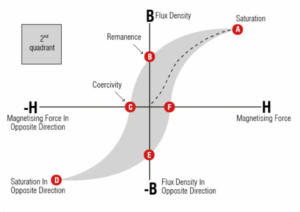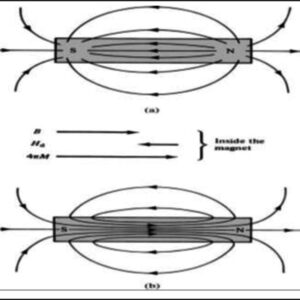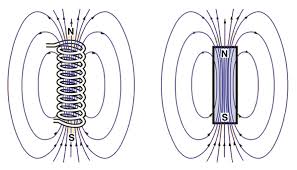In this magnet industry, you will always see magnets listed with a maximum pull force, remanence, and gauss rating. So what’s the difference among them?

What is Gauss?
Gauss is a measure of magnetic induction and a value of density. Simply put, Gauss represents the number of magnetic field lines per square centimeter, emitted by a magnet. The higher the value, the more lines of magnetism are emitted by the magnet.
When a Gauss rating is displayed this can either be a measure of open circuit flux density or closed circuit flux density, which also can be called remanence.
In essence, they are both measurements of the number of lines of magnetism in every cm2, but in different conditions. Magnets in open circuits rarely exceed a Gauss value of 7,000 Gauss. Any magnet that has been magnetized has a remanence value, as remanence is the amount of magnetism maintained by a magnet once the magnetizing force has been removed and the magnet is still in a closed circuit.
The closed circuit flux density or remanence value is the maximum possible Gauss value when the magnet is magnetized and still in a totally closed magnetic circuit. In a closed circuit condition, all magnetism is flowing from North to South through a ferrous short circuit and the magnet unleashes its full power. In this condition. there is no external magnetic field, just like a horseshoe magnet appears to be nonmagnetic when its keeper is in place.

Closed circuit
When the magnet is removed from its closed circuit state (like removing the keeper from a horseshoe magnet), it is said to be in an open circuit. the magnet is throwing its magnetism through the air and is looking for something to attract. In this state, the flux density is resting at a much lower level and the value depends on the ratio between the magnet’s length and diameter (known as the l/d ratio or working point of the magnet). For rectangular magnets, the equivalent or effective diameter in the equation is used to calculate l/d.
Open circuit
The values for both open-circuit and closed-circuit flux densities are always very different so it is important to know what the rating represents. Here at HS Magnet, we only ever state open circuit flux densities which are measured by resting a hall probe on the pole of the magnet and measuring the actual number of lines of magnetism in every cm2 of pole area.
Is a magnet with a high surface Gauss value stronger than one with a low value?
Not necessarily. The size of a magnet’s magnetic field is also a function of geometry, or more specifically a magnet’s length-to-diameter ratio. For example, our 5cm3 and 10cm3 neodymium magnets have the same surface Gauss value of 4,900. This is because they have the same magnetic length-to-width ratio. Naturally, you would expect the larger magnet to have a higher value as it is larger and stronger, however, this is not the case. Magnets that have shorter magnetic lengths (distance between poles) will generally have a lower surface Gauss value and thicker magnets will have higher values. For example, a 10mm diameter by 3mm thickness N42 neodymium magnet has a Gauss rating of 3600 while the same magnet but 5mm thickness has a Gauss rating of 5100. The surface Gauss rating is just an indicator of field strength at one particular point and does not take into account the complexities of three-dimensional fields interacting with other items around them.
The overall size of a magnetic field is relative to the size of the magnet; it’s a fact that a bigger magnet, will produce a bigger magnetic field when it is in an open circuit. How a magnet behaves when it is used in closed circuits, such as within the application it is intended for has an impact on its overall strength. For example, a large raw neodymium magnet will attract ferrous objects from further away than a magnet made of the same material in a smaller size.

However, if you place a smaller magnet within a steel shell it will generally have a greater clamping force against a steel surface.
As many people, when searching for a magnet, are seeking one that can hold a specific weight in either a vertical or sheer position most suppliers place far more value on the maximum pull strength of the magnet, rather than the Gauss value. Because, as we have seen, this can be a bit of a red herring. We test all our magnets using a computer-controlled tensile and compression machine to accurately measure the maximum weight a magnet can hold when in flush contact with a steel surface, we also test their surface Gauss rating. All our magnets are clearly labeled with their maximum pull strength in vertical and sheer positions as well as their Gauss rating.
If you want to know more about magnet surface gauss, remanence and pull strength, please feel free to contact us. Our experienced professional team can help you choose the most suitable for your application.



